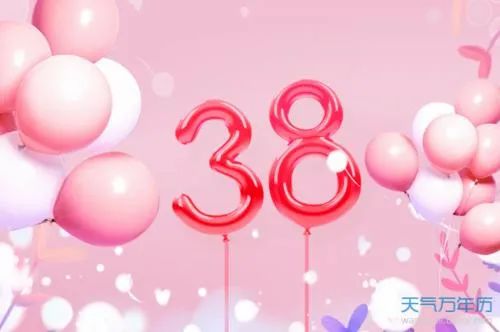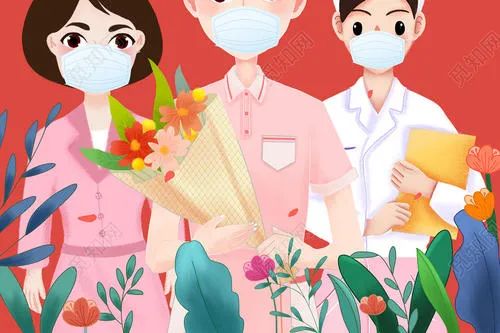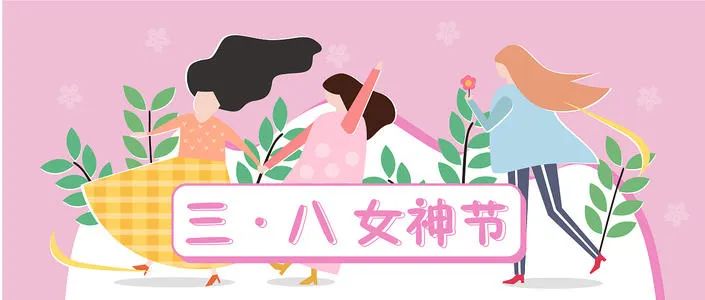The Interrelationship Between the Uterus and Breasts
□ Wang Huizhen, Second People’s Hospital Affiliated to Fujian University of Traditional Chinese Medicine
The theory of exterior and interior is one of the most distinctive theories in Traditional Chinese Medicine (TCM). It is a relative concept, referring to the skin and internal organs, where the skin is considered the exterior and the internal organs the interior; in terms of zang (organs) and fu (hollow organs), the fu is the exterior and the zang is the interior. The connection between the skin and the internal organs is established through the meridians.
The classification of zang and fu in TCM is primarily based on the definitions provided in the “Su Wen: On the Distinction of the Five Zang Organs.” Although profound, later practitioners believed that the explanation of the extraordinary fu organs lacking an exterior-interior relationship limited their thinking. Furthermore, the breasts have not been classified, which is a shortcoming in TCM theory. The author believes that the uterus and breasts are interrelated and will discuss this from several aspects.
The Uterus and Breasts Share a Common Root

The Uterus and Breasts Are Rooted in the Kidneys
The uterus is the palace for nurturing embryos and fetuses, and the organ that produces menstruation, serving as a female reproductive organ; the breasts are secondary sexual characteristics of females. The entire function of the uterus and breasts is related to reproduction. The kidneys store essence and govern reproduction. The primary physiology of the uterus and breasts involves menstruation and lactation, with the kidneys playing a leading role in the mechanism of menstruation, being the source of tian gui (heavenly water), the foundation of chong and ren (the penetrating and conception vessels), and the connection of the bao mai (uterine vessels) to the kidneys, with fluids emanating from the kidneys. Essence can transform into qi and blood, with qi and blood above transforming into milk and below serving as the foundation for menstruation, thus sharing a common source. The essence stored in the kidneys governs the uterus’s menstruation and nurturing of the fetus, providing the material basis for the development and lactation of the breasts. The uterus and breasts are rooted in the kidneys, and under the influence of kidney qi, they fulfill the physiological functions of the uterus governing menstruation, overseeing pregnancy, and the breasts producing milk.
The Uterus and Breasts Are Connected by Multiple Meridians
The uterus and breasts are closely related through multiple meridians. There are direct connections through meridians such as the chong mai (penetrating vessel), ren mai (conception vessel), liver meridian, and kidney meridian; there are also indirect connections through meridians such as the stomach meridian, spleen meridian, gallbladder meridian, pericardium meridian, san jiao meridian, du mai (governing vessel), and yin wei mai (yin linking vessel).
Direct connections between the uterus and breasts include the chong and ren vessels, as well as the liver and kidney meridians. For instance, the chong mai originates in the bao (uterus) and disperses in the chest area of the breasts. The ren mai starts in the bao, travels through the abdomen, ascends to the guan yuan (lower abdomen), and enters the chest, reaching the lower part of the breasts; the foot jueyin liver meridian encircles the yin organs, spreads to the ribs, and passes through the nipples; the bao mai is connected to the kidneys, with the foot shaoyin kidney meridian entering the yin and reaching the breasts, close to the zhong (middle) area. These meridians directly connect the uterus and breasts.
There are also indirect connections between the uterus and breasts through meridians such as the foot yangming stomach meridian… which directly connects from the xue pen (chest) to the inner breast, descends alongside the navel, and connects with the chong mai (which emerges from the qi street). The foot taiyin meridian… directly ascends along the inner thigh, converges at the yin organs, and connects in the abdomen, linking to the ribs and dispersing in the chest.
Through these direct and indirect meridian connections, the uterus and breasts communicate not only internally and externally but also vertically, maintaining a connection between the exterior and interior, facilitating transmission and response. This allows the uterus and breasts to receive nourishment from the blood sea governed by the chong mai, the nourishment of various yin governed by the ren mai, the blood stored in the liver, the qi and blood transformed by the spleen and stomach, and the essence stored in the kidneys, enabling them to govern menstruation, nurture the fetus, produce milk, and provide exquisite nourishment for infants.
The Uterus and Breasts Experience Synchronization in Growth and Decline
The uterus and breasts share a common root in the kidneys and are connected by multiple meridians. Both the mammary glands and the uterus are regulated and influenced by female sex hormones, undergoing synchronized changes in morphology and structure during different physiological periods.
The Uterus and Breasts Develop Together
During the embryonic stage, around the 8th week of pregnancy, the internal reproductive organs and mammary glands develop simultaneously; in newborn girls, around one week after birth, slight breast swelling can be observed, and some may have a small amount of blood-tinged discharge from the vagina. This phenomenon is due to the influence of estrogen produced by the mother while the baby is in the uterus. After birth, with the cutting of the umbilical cord, the baby loses the supply of maternal blood, leading to a sudden drop in hormone levels and resulting in withdrawal bleeding.
By the prepubescent stage, the external breasts begin to develop, while the internal uterus gradually matures from an immature to a mature form. Upon entering puberty, the breasts gradually develop and become one of the secondary sexual characteristics of females. The uterus not only develops morphologically into an adult type but also begins to respond to ovarian hormones, leading to periodic shedding of the endometrium, marking the maturation of reproductive function with the onset of menstruation.
After pregnancy, the uterus gradually enlarges as it accommodates the fetus, and the female breasts undergo further development during pregnancy and lactation, with the breasts and nipples continuing to enlarge, the areola darkening, and the mammary ducts gradually expanding, with milk secretion beginning. The “Yi Zong Jin Jian: Key Principles of Gynecology” states: “After five months, if the breasts of a pregnant woman are enlarged and contain milk, she is pregnant.” This indicates that ancient practitioners had discovered the developmental connection between the breasts and the uterus through clinical practice, but unfortunately, this was not further elevated in theory.
The Uterus and Breasts Age Together
Postmenopausal women, as stated in the “Su Wen: On the Ancient Heavenly Truth”: “At seventy-seven, the ren mai becomes deficient, the tai chong mai declines, the tian gui is exhausted, and the pathways of the earth are blocked, leading to physical deterioration and infertility.” As the chong and ren vessels decline, the yin essence that promotes growth, development, and reproduction is depleted, causing the uterus and ovaries to gradually atrophy. Menstrual flow decreases until it ceases, and at this time, the previously full breasts no longer remain plump, with mammary tissue gradually atrophying. The atrophy of the uterus coincides with the atrophy of the breasts, leading to a loss of reproductive capability.
Although the uterus and breasts are anatomically positioned with one above and one below; one hidden within and one external; they appear unrelated. However, due to their root in the kidneys and connections through multiple meridians, the two organs are interconnected, communicating with each other, and coordinating to maintain the physiological functions of menstruation, pregnancy, childbirth, and lactation in women.
The Uterus and Breasts Share a Common Physiological Source

Menstruation and Milk Share a Common Source, Qi and Blood Are Fundamental
Zhang Jingyue in the “Complete Works of Jingyue: Regulations for Women” pointed out: “The milk of women is transformed from the qi and blood of the chong and ren vessels, thus menstruation is below and milk is above.” Hence, the saying “menstruation and milk share a common source” emerged. Although the menstruation produced by the uterus and the milk secreted by the breasts manifest differently, they both originate from qi and blood. The main component of menstruation is blood, which relies on qi for transformation and movement; milk is also transformed from qi and blood. When a woman reaches a certain age, with the fullness of kidney qi, tian gui is secreted, and the chong and ren vessels are abundant, gathering the qi and blood of the organs into the bao, leading to overflow and timely menstruation. If the two essences unite, they form a shape, nourishing the fetus with gathered qi and blood. After ten months of pregnancy, the uterus and breasts grow together, and upon delivery, the uterus expels residual blood and turbid fluid to return to its original state. When the spleen and stomach function well, the liver qi flows smoothly, the milk vessels are unobstructed, and the lung qi disperses, the qi and blood, fluids, and liquids from the chong and ren vessels ascend to the breasts, transforming into milk to meet the needs of lactation. As Li Shizhen detailed in the “Compendium of Materia Medica”: “Milk is transformed from yin blood, produced in the spleen and stomach, and absorbed by the chong and ren vessels. If not pregnant, it flows down as menstrual water; if pregnant, it is retained to nourish the fetus. After delivery, it changes from red to white, becoming milk. This is the subtlety of creation, the marvel of nature.” In “Fu Qingzhu’s Gynecology”: “Milk is formed from the transformation of qi and blood… How could it be that without qi, milk cannot be transformed, and without blood, milk cannot be produced?” This further illustrates the close relationship between menstruation and milk.
Opening and Closing, Responding to Each Other
There exists a tacit opening and closing between the uterus and breasts. For instance, when a woman experiences menstruation, there is no secretion of milk. When the uterus opens and discharges, the breasts close. After childbirth, the uterus closes and returns to its original state, while the breasts open and secrete milk. During lactation, the milk vessels are open, the milk ducts open, and milk is expelled; conversely, during the lactation period, the uterus is in a closed state, thus menstruation generally does not occur. Without menstruation, it becomes difficult to conceive. This dynamic balance of opening and closing between the uterus and breasts maintains physiological health in women.
In summary, menstruation and milk both originate from qi and blood. The uterus and breasts maintain dynamic balance through opening and closing; they cooperate vertically, responding to each other; one opens while the other closes, one discharges while the other retains, sustaining women’s physiological health.
The Uterus and Breasts Are Pathologically Interconnected
Due to the multiple meridian connections between the uterus and breasts, sharing a common physiological source, and maintaining dynamic balance through opening and closing, they are also closely related pathologically.
When a zang or fu organ becomes diseased, it can affect the corresponding surface tissues and organs through meridian transmission, and conversely, when surface tissues and organs are diseased, they can also impact the related zang and fu organs. Therefore, a disease in the uterus can affect the breasts, and a disease in the breasts can influence the uterus. They may share the same disease, be interlinked, or have their functions disrupted.
Shared Disease Between the Uterus and Breasts
When the uterus and breasts share the same disease, it can be observed that patients with uterine developmental disorders often have breast developmental disorders; patients with uterine fibroids often have lumps in the breasts; lumps or swelling in the breasts, especially in married patients, often accompany organic changes in the uterus and its appendages. For instance, abdominal pain due to qi stagnation and blood stasis often coincides with breast tenderness before and after menstruation. In cases of Sheehan syndrome, the uterus does not produce menstruation, leading to amenorrhea, and both the uterus and external genitalia atrophy, while the breasts also atrophy.
Yao Yin pain is a type of severe dysmenorrhea in gynecology, referring to abdominal pain during menstruation that radiates to the breasts, with pain extending to both breasts, indicating that uterine pain is linked to breast pain, presenting as simultaneous symptoms; breast cancer can also metastasize to the ovaries.
Disruption of Opening and Closing, Disorder of Menstruation and Milk
Menstruation and lactation, opening and closing, are sometimes orderly. However, clinically, when the opening and closing of menstruation and milk are disordered, abnormalities in menstruation and lactation can occur. For example, the common galactorrhea-amenorrhea syndrome occurs when the uterus closes and does not discharge, leading to amenorrhea, while the breasts produce milk abnormally when they should not; similarly, in cases of poor uterine recovery postpartum, the uterus does not close properly, leading to difficulties in milk secretion from the breasts.
In summary, the uterus and breasts also influence each other pathologically.

The Uterus and Breasts Are Diagnostically Interconnected
The uterus and breasts are connected through multiple meridians. From a Western medical perspective, both the uterus and breasts are target organs for female sex hormones. Due to the interrelation of diseases between the uterus and breasts, clinical diagnosis can reference each other. TCM holds that diseases arise along the meridians, thus diagnosis should follow the meridians, considering the exterior-interior relationship between the uterus and breasts. When examining uterine diseases, breast diseases should be ruled out. Similarly, when examining breast diseases, one should discern whether there are uterine diseases. In addition to understanding menstrual history, obstetric history, and lactation history, it is also important to consider the condition of the breasts before and after menstruation, including any pain, nodules, or galactorrhea.
Disorders of the opening and closing functions between the uterus and breasts are commonly seen in clinical conditions such as galactorrhea-amenorrhea syndrome and polycystic ovary syndrome, where the uterus retains and does not discharge, leading to amenorrhea, while the breasts exhibit galactorrhea. In cases of poor postpartum uterine recovery, there is often insufficient milk secretion. Patients with uterine fibroids often have accompanying breast hyperplasia or nodules, frequently correlating with menstrual cycle changes. Therefore, clinical practice should consider these interrelations.
The Uterus and Breasts Can Be Treated Together
The uterus and breasts can influence each other, whether the upper disease affects the lower or vice versa, or whether they share the same disease. Thus, different diseases can be treated together; for instance, in the case of galactorrhea-amenorrhea syndrome, while differentiating the syndrome, one can select herbs that promote lactation to treat amenorrhea, such as Zao Jiao Ci (Soapberry), Chuan Shan Jia (Pangolin), and Wang Bu Liu Xing (Vaccaria Seed) to promote lactation. When treating breast diseases, since they are also influenced by menstrual cycle changes, attention should be paid to regulating menstruation, using herbs like Chuan Niu Xi (Cyathula Root) to promote blood flow downward. Additionally, stimulating the nipples can promote uterine contractions; for prolonged labor due to weak contractions, nipple stimulation can aid in labor progression. For postpartum uterine contraction weakness, breastfeeding can stimulate the nipples to assist uterine contractions. Symptoms such as breast tenderness before and after menstruation, and breast lumps should be treated with herbs that promote menstruation and lactation.
In conclusion, the uterus and breasts are interconnected, with one above and one below, one internal and one external, linked through multiple meridians such as the chong, ren, stomach, liver, and kidneys. Due to their physiological commonality, synchronized growth and decline, vertical connection, and mutual response, as well as their pathological interrelation, diagnostic interconnection, and therapeutic unity, the uterus and breasts share a rich network of meridian connections. Their relationship aligns with the TCM concept of exterior and interior. Understanding the close relationship between the uterus and breasts is beneficial for further refining the theoretical framework of TCM gynecology, providing a more comprehensive understanding of women’s physiology and pathology, and guiding clinical diagnosis and treatment.
(Wang Huizhen) Reprinted from China Traditional Chinese Medicine News, March 8, 2021, Academic Section, Page 4.

